In this tutorial, we will show you how to install and use PowerTools on your Steam Deck.
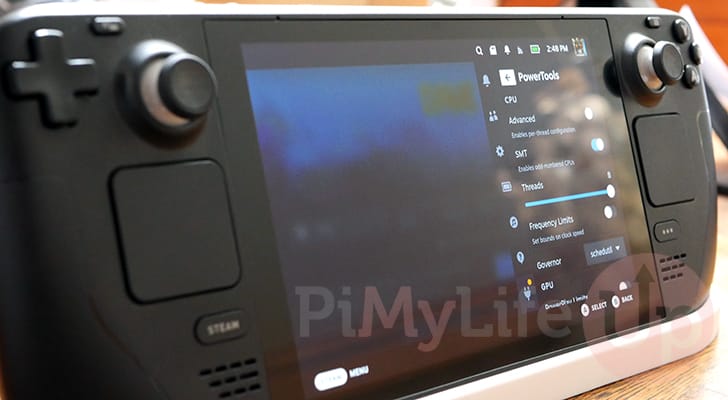
PowerTools is an incredibly powerful tool that you can utilize to control various aspects of your system on the fly.
Using this tool, you can improve the performance of the Steam Deck in various games and tools. For example, in some emulators, disabling SMT improves the performance of some emulators on the Deck.
You can even use this tool to improve the battery life of your Steam Deck. Not all games will need the full power of the Deck so you can do things such as limiting the clock rate of the core and even decreasing the maximum power usage of your GPU.
Your mileage will differ from game to game, but Powertools allows you to tweak settings for each game on the fly easily.
Hopefully, by the end of this tutorial, you will have a good understanding of how you can put this tool to use.
Overview of the PowerTools Options
Before continuing, let us give you a quick overview of all the options that PowerTools gives you. You can change all of these settings on the fly.
If you aren’t overly interested in each option, skip straight to the next section to install this useful tool.
- CPU:
- Advanced – Allows you to configure each of the Steam Deck’s eight threads. You will only want this option if you know what you are doing.
- SMT – This stands for Simultaneous multithreading and allows you to turn off the secondary thread each core provides. Some games and emulators might perform better with this turned off.
Essentially you will be limiting your Deck to 4 threads, one per core. - Threads – Allows you to modify the number of threads available to the running game.
- Frequency Limits – Using this option, you can choose the CPU’s minimum and maximum clock rate.
- Governor – PowerTools even allows you to change the Steam Deck’s CPU Governor. The governor dictates how the Steam Deck will ramp up or down the CPU.
- GPU:
- PowerPlay Limits – You can control the maximum amount of power the GPU can consume using this option.
- Frequency Limits – You can also control the frequency of the GPU by setting its minimum and maximum clock rates.
- Downclock Memory – This option allows you to force the RAM into lower power mode, which causes it to downclock.
- BATTERY:
- Charge Current Limits – PowerTools also allows you to adjust how your Steam Deck charges its battery.
You can limit the maximum amount of current the Steam Deck will draw from your power adapter using this option. - Charge Mode – You can also use this tool to change the charging mode of your Deck. For example, you can tell the Deck to “
Discharge“. - Charge Limit – The final battery option allows you to set a maximum amount your Deck will charge to.
Setting this can help your battery’s lifespan and is useful when you keep the Deck pugged in a lot.
- Charge Current Limits – PowerTools also allows you to adjust how your Steam Deck charges its battery.
- MISCELLANEOUS:
- Persistent Profile – The final option allows you to save your setting changes so they will be applied the next time you load that particular game or application.
By default, PowerTools does not save any of your settings changes.
- Persistent Profile – The final option allows you to save your setting changes so they will be applied the next time you load that particular game or application.
Installing and Using PowerTools on the Steam Deck
Over the following sections, we will walk you through installing and using PowerTools on your Deck.
Thanks to Decky Loader, installing and using this tool is super straightforward.
Installing Decky Loader
1. Before continuing any further, you must install Decky Loader onto your Steam Deck.
We already have a guide that covers the installation process, so we won’t be covering it within this guide.
Decky Loader is a plugin system for Steam Gaming Mode that allows us to install and use tools like PowerTools easily from within the Steam Deck interface.
2. Once you have Decky Loader installed, you can safely continue this tutorial.
You must be in gaming mode for the following steps to work.
Using Decky Loader to Install PowerTools to the Steam Deck
3. To access Decky Loader on your Steam Deck, you will want to press the quick access button.
This button is the one with the three dots on the right side of your Deck.
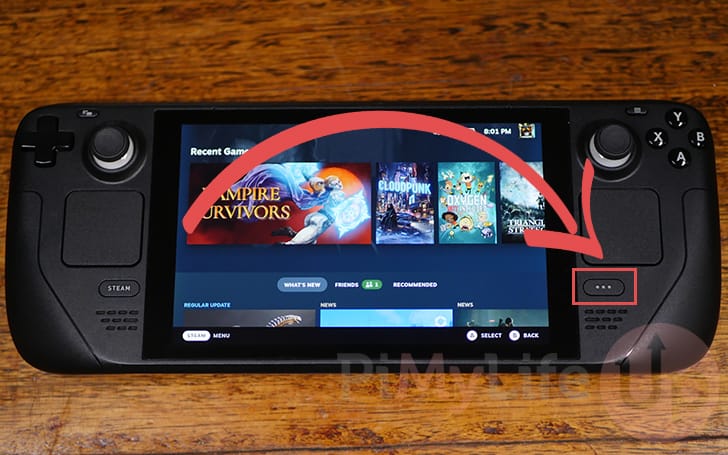
4. With the quick access menu open, click the “Plugin” icon (1.) to be taken to Decky Loader.
Next, click the “Marketplace” icon (2.) to open the Decky Loader marketplace.
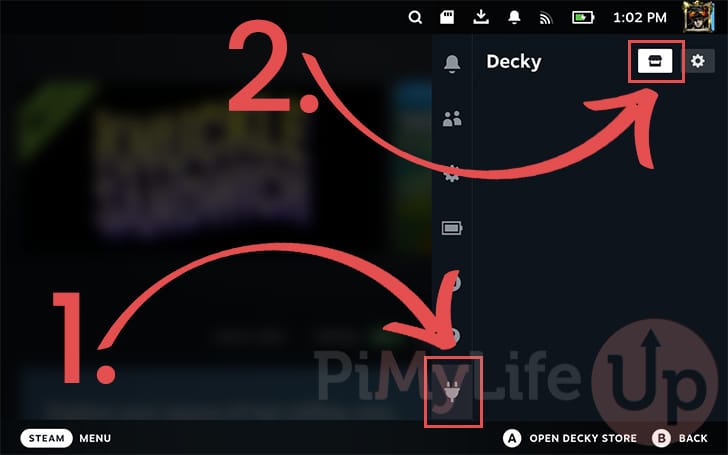
5. Within this menu, scroll down until you see “PowerTools” listed within the marketplace.
To begin installing PowerTools to your Steam Deck, click the “Install” button.
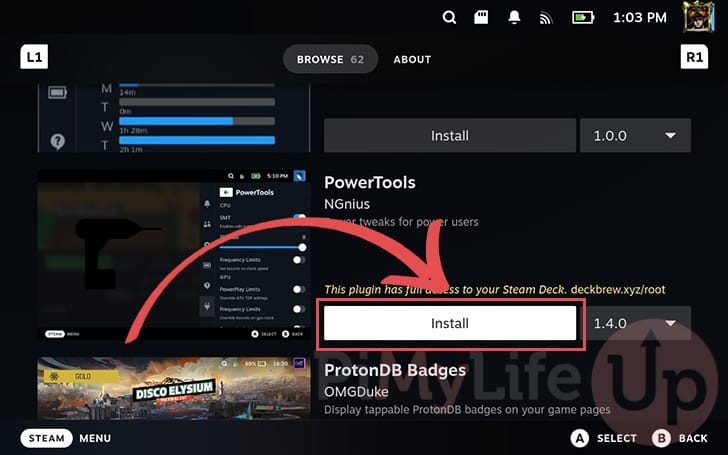
6. You will be prompted to confirm the installation of PowerTools to your Steam Deck. This prompt tells you the exact version that you are installing.
To continue this process, click the “Install” button.

7. From now on, you can access PowerTools through the quick access menu. Of course, to properly use the tool, you will only want to open it when running a game.
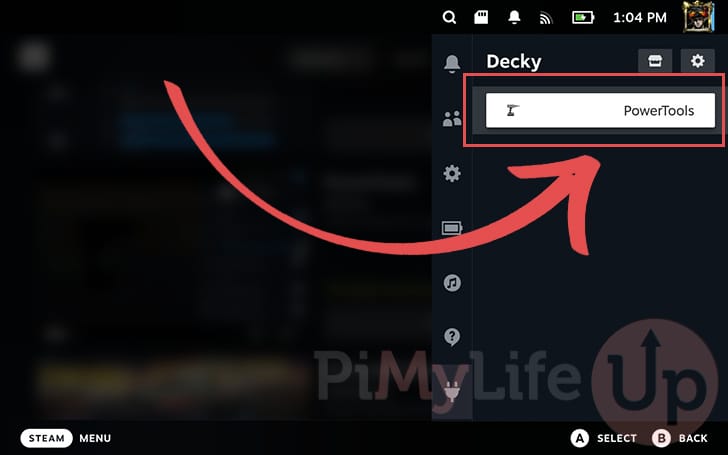
Tweaking Settings using PowerTools
8. Once you have a game open on your Steam Deck, open the quick access menu again and change to the Plugins tab (1.).
In this menu, you should now see PowerTools listed as an option. Click this option to load PowerTools (2.) on your Steam Deck.
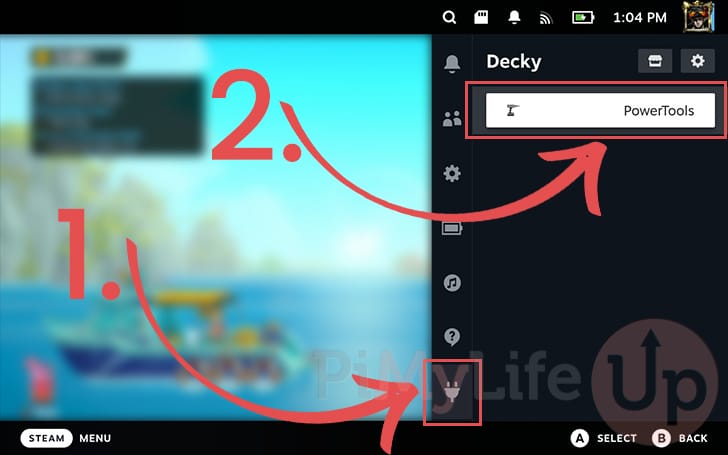
9. Now utilize this settings page to tweak the power settings of your Steam Deck. You can control numerous aspects here.
It might take some tweaking to get a game running optimally.
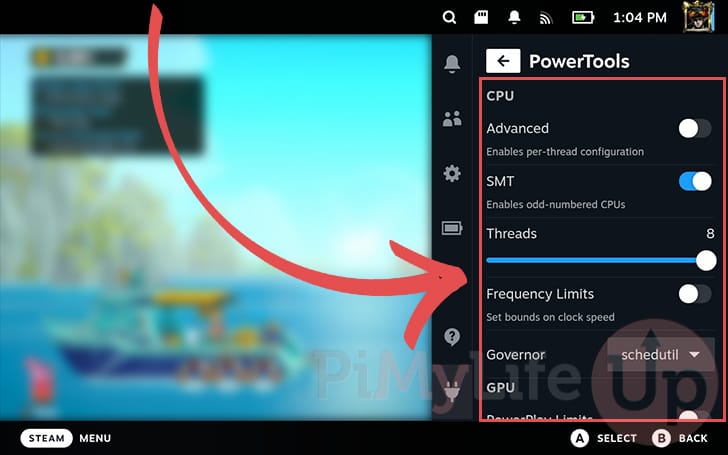
10. Once you are finished using PowerTools and are happy with your settings, toggle on the “Persistent Profile” option.
This option will save all of your changes so they will be applied the next time you run the game you made the tweaks on.
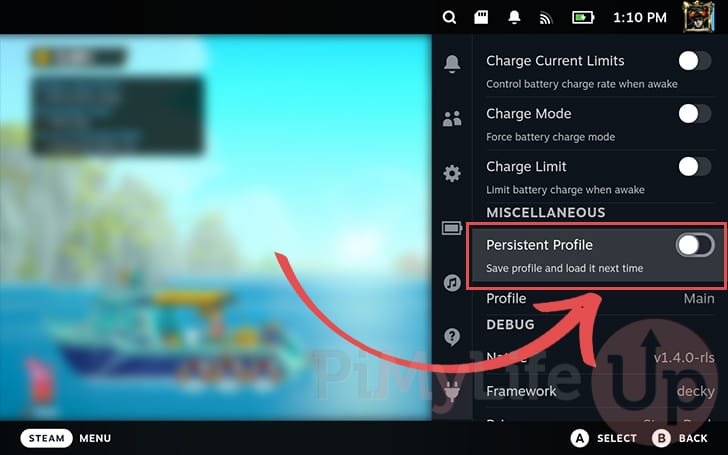
Conclusion
At this point, you should hopefully now have PowerTools up and running on your Steam Deck.
As you will have seen, this tool allows you to control numerous aspects of your system. For example, you can limit the CPU’s frequency, disable SMT, and more. You can also try changing the CPU governor and more.
Please feel free to leave a comment below if you have any questions about using PowerTools on your Deck.
If you found this tutorial helpful, we highly recommend checking out many other Steam Deck tutorials.

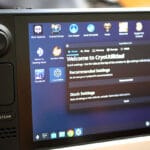




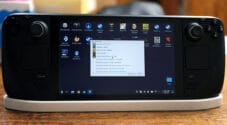

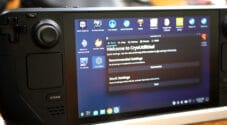
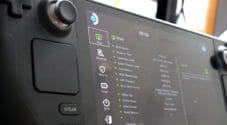
As a side note, if you only want to set a charge limit without using any other features of PowerTools, you can do it the Linux way by editing
directly.